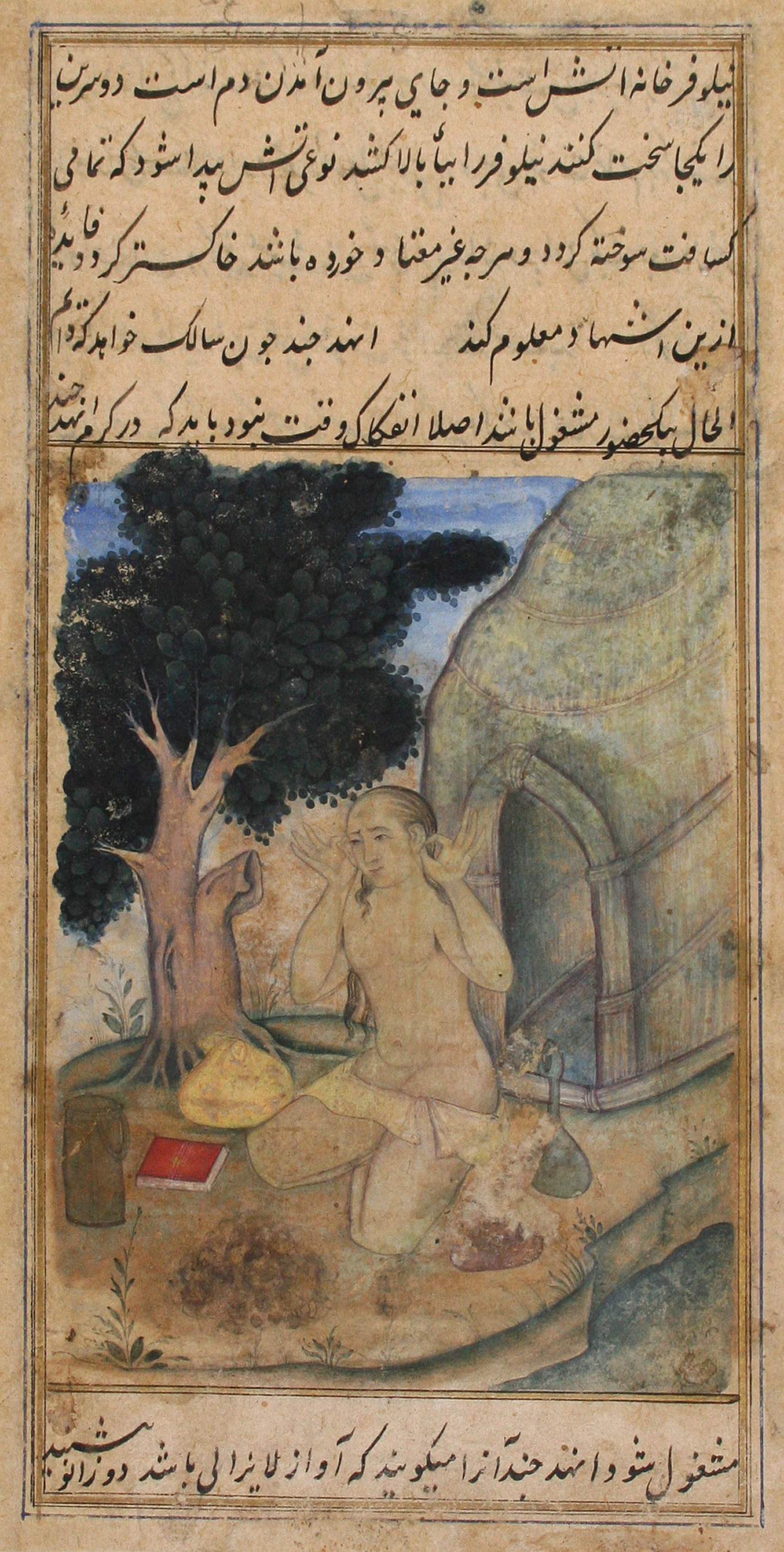Bahr al-Hayat: World’s Oldest Manuscript on Yoga in Persian
Qudra Healing
The Yogi’s quest for Divine proximity through asana aims to imitate natural ‘postures’ observed in all living things. Unity being the primary goal; yoga its vehicle, where the act of physical postures, reflection, contemplative meditation which in turn brings awareness of the breath and a longing for one’s (Divine) origin. The concept of inna lilahi wa inna ilayhi rajeoon (indeed we belong to our Lord and to Him is our return) emphasizes the idea of ‘die before you die’ hence facilitating the desired spiritual states of Fana and Baqa, of which yoga being a potential medium of experiencing nirvanic states. A student of spirituality perceives Yoga as a form of praiseworthy worship where mantra or dhikr may accompany the asana in order to achieve the desired effect.
Inspired by a recent lecture by Sayyid Amiruddin on the subject of Yoga, the following information was brought to light.
The earliest extant manuscript on Yoga in the world with illustrated asanas is a Persian text called Bahr al-hayat (Ocean of Life), a translation of the an earlier Arabic text called Hawd al-hayat (The Pool of Life) – said to be an Arabic translation of Amrtakunda, a 2000 year old lost book on Yoga, written in Sanskrit – dates from the turn of the seventeenth century.
None of its asanas are taught in any earlier Sanskrit text, and their descriptions are more detailed than those in other Sanskrit treatises written over the next century. The illustrated treatise was produced in the context of an Indo-Islamic court. It is one of three yoga-related manuscripts commissioned by Prince Salim (the future Mughal Emperor Jahangir) in Allahabad between 1600 and 1604. A total of twenty-one asana images are contained in the works. One from the collection can be viewed below.

The Persian text of Ocean of Life was composed in Gujarat around 1550 by Muhammad Ghwath Gawilyari, a prominent spiritual master, grandson of Fariduddin Attar (Attar of Nishapur). Muhammad Ghawth was a direct biological descendant of the Prophet Muhammad in the 15th generation. His goal was to teach his disciples hatha practices compatible with goals of spiritual transformation. Based on both earlier Sanskrit treatises and conversations with living yogis, the text demonstrates how yoga was made familiar to Sufi ascetics.”
An unfolding excerpt from the translated version of Bahr al Hayat by Mohammed Ghawth Gawilyari
“Know that the wisdom of the human body rests upon water, and its basis and structure is upon earth. Existence, constitution, contraction, and expansion, are by the power of fire, while height, fancy, motion, power, fate, and respiration are by the perception of air. General comprehension, particular substance, human logic, familiar understanding, the discernment of reality, and the infused spirit are from the emanation of “God is the light of the heavens and the earth” (Qur’an 24:35). Since for these mentioned things the overt manifestation of the existence of wisdom is not uniform, the orbit of the microcosm raises its head, becoming prepared and existent, and skin, flesh, blood, bone, vein, foot, and face become existent by the substance of the macrocosm. It makes known the motion, articulation, and rest of the macrocosm, for all of the heavens and planets exist by the daily motion of the throne in one day. When that circle settles, the microcosm becomes superfluous. The planet of earth, which is the center of the heavenly spheres, in a short time becomes a scattered mote of dust. Therefore the divine creator has, with wisdom and power, given them a craft that connects them, so that one cannot overcome another. Thus is the macrocosm established. Wherever with the very same wisdom the microcosm sets its basis and structure on that, it exercises with acquisition, discipline, strategem, and wisdom, until without custom it becomes customary, so that the microcosm is not confounded. As is the one, so is the other; let it be revealed!”
Hence, the physical discipline and practice of Yoga is perceived as one of many modalities available to man with innumerable benefits. It is therefore a commended practice as it aides in internal and external harmony, awareness and raising ones’ consciousness through unification of mind, body and soul.
- Further Reading:
- Ocean of Life,
Bahr al-hayat, by Muhammad Ghawth Gwaliyari
- Sufism and Yoga according to Mohammed Gwath
One thought on “Bahr al-Hayat: World’s Oldest Manuscript on Yoga in Persian”
Hello, Thanks for this wonderful article on yoga manuscript which is one of the oldest in the world in Persian…..just stumbled from http://www.academia.edu by virtue of quoting about Bahr al hayat….many thanks ..infact exploring further on this truth, as am a Ph.D scholar presently at age 71…Inshah allah…
Hari Om ! Tatsat !
srinivasan k iyer
India